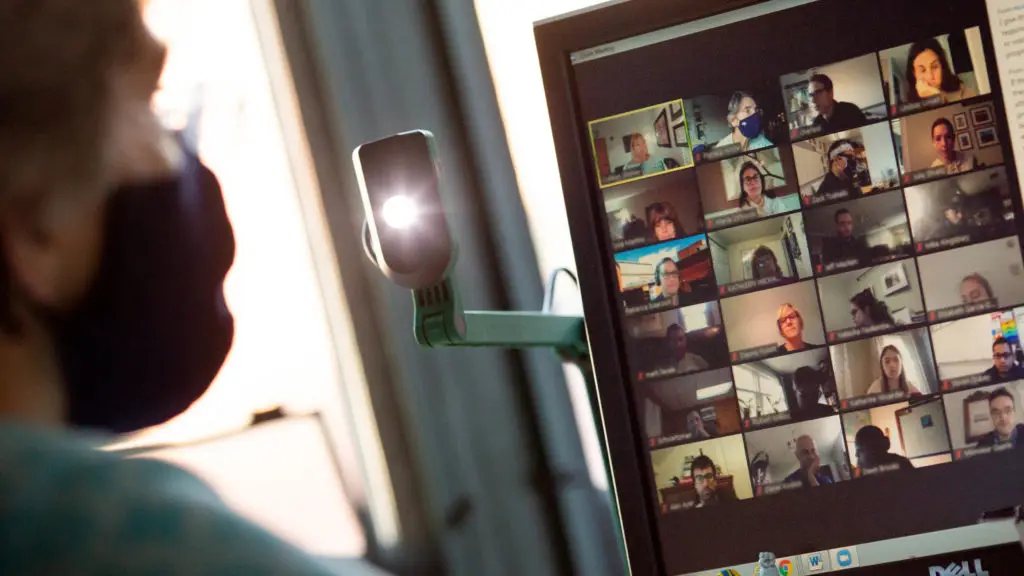After opposing in-person schooling for more than a year, teachers unions and some Democratic elected officials have flipped, and now want to end all online teaching and force everyone back to school whether they’re comfortable with it or not.
Why the flip? Not so clear. Pandemic risks have declined but not disappeared. But the downsides of the rush to jam everyone back into classrooms are evident. First, abandoning all online learning means that some valuable innovations will be lost. Second, strong-arming reluctant families will exacerbate already festering problems with trust in the school system.
On Innovation
K–12 education has not stood still since schools closed in March 2020. Though some educators and parents waited passively for a hoped-for reopening, many did not. Instead, families, community organizations, and teachers innovated, devising ways of mixing in-person and online instruction. In Indiana, Indianapolis Public Schools partnered with The Mind Trust to offer small learning hubs for students to start learning in-person in the fall of 2020. They are now planning for these hubs to become a permanent feature of student support—long after regular in-person learning has resumed.
Microschools and learning pods maximized personalization and brought kids and adults together in small groups to minimize disease exposure. Edgecombe County Public Schools in North Carolina started a microschool in 2017 in collaboration with Transcend, and expanded the school last year to include students from more grade levels. The district is also considering ways to keep learning pods a part of its school system, which were created in response to pandemic school closures for students without wifi access or adult supervision.
Some parents also created collaborative homeschools, where families could pool their time and expertise with the help of online resources. Companies like Prenda and Curacubby offer the technological support needed to get collaboratives like these up and running.
Many districts have also embraced the use of online and other non-classroom-based resources in the name of a new strategy that spares kids from being held back and placed in all-remedial courses. Called “acceleration,” this strategy keeps kids in grade-level classes and provides just-in-time help for kids who have missed a necessary idea or skill. It assumes that classroom teachers can tap into online courses and flexible tutoring (provided by teachers, specialist organizations, and volunteers) meant to teach exactly what an individual student needs. Some teachers will specialize in helping kids at recess and during late afternoons and weekends, rather than standing in front of classrooms. It works: kids who have lost some learning but are kept at grade level do much better than those assigned to old-fashioned remediation.
In a national poll of 1,150 parents in April, 58 percent said schools should offer both remote and in-person options next year and let parents choose. Districts across the country are giving families this opportunity. In Colorado, Aurora Public Schools will allow students in K–12 to choose remote learning for the entire year. Los Angeles Unified School District is also offering a remote option that would take place mostly online. One in five district leaders say they will offer virtual learning into the future, according to the American School District Panel.
These options are revolutionizing the use of time, making community resources more relevant to schools, transforming the roles played by teachers, and making new room for families, community members, and professionals from fields other than education. Why abandon them now? No one has said. Officials like New York City chancellor Meisha Porter have made gobbledygook statements about how online innovations will be brought into the in-person classroom, but no one has really thought about how this can be done.
On Trust
Even before the pandemic closures many Black and Hispanic parents had deep concerns about in-person schools: discriminatory tracking, harmful disciplinary and suspension practices, and unequal access to good teachers and schools with adequate funding. Some also knew their little ones dreaded school because to them it meant fear and distress because of classroom disorder, bullying, and harsh and dismissive treatment by teachers.
These concerns, plus a disproportionate exposure to illness and death from COVID-19, have broken many Black and Hispanic parents’ habits of acceptance of whatever public schools offer. Some have disappeared from view. Many are refusing to send children back to schools they now openly fear and distrust, and are creating their own alternatives via enrollment in private schools, homeschooling, and joining community-built microschools and learning pods. Some are staying in public education but shifting to charter schools, thus avoiding district flip-flops.
Trust between families of color and public education weakened gradually for a long time—then in the pandemic, all at once. New York City and other districts can’t regain these families’ confidence by coercing them back into in-person schools. Public education must diversify, make room for new ideas, support initiatives from outsiders—particularly in communities of color—and expect parents to remain, as they have become, full partners in decision-making for their children’s education.
The pandemic has created new possibilities in K–12 education. In New York and elsewhere, teachers unions and their party allies are trying to put the genie back onto the bottle. If they succeed in the short run, many important innovations will be lost. But they won’t succeed in the long run, because the families they once considered a captive audience will continue looking elsewhere.




